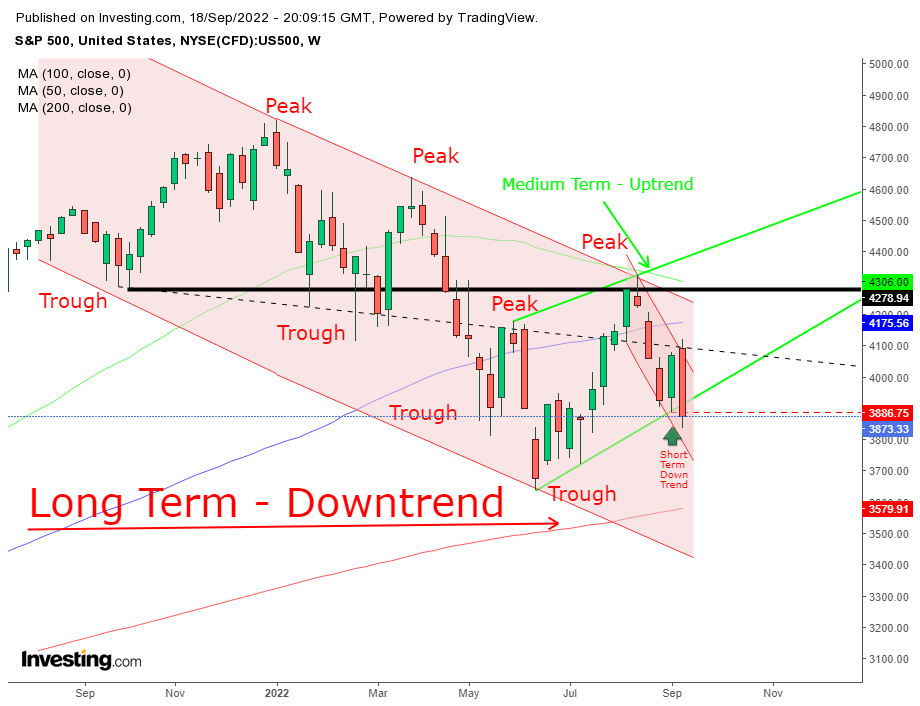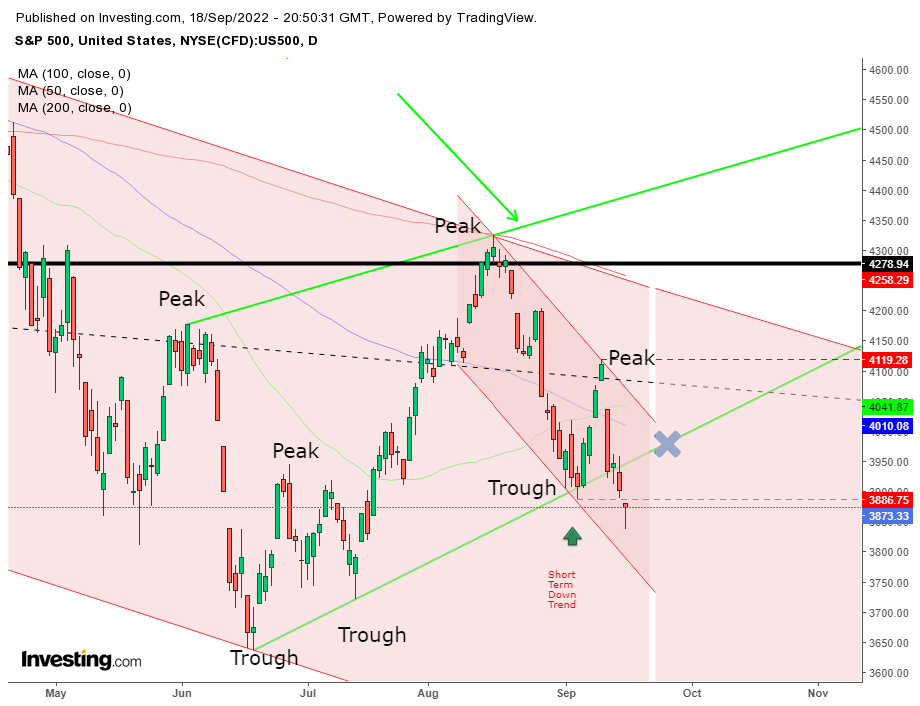The S&P 500 Index was clobbered last week, suffering its worst selloff since June. Ongoing jumbo rate hikes, even at the risk of a recession coupled with inflation, finally hit investors' consciousness. FedEx (NYSE:FDX) suffered a 21% plunge on Friday, its worst in over 40 years, as the shipment of goods seriously slowed down.
For dip buyers spoiled by a decade of unprecedented stimulus, especially in the previous couple of years, it was a foregone conclusion that the June low was the bear-market bottom.
To randomly call a low a bottom is nothing more than guessing. To reach a bottom, the S&P 500 must "bottom out." Did the index create a base? Let's look at the chart.

Source: Investing.com
We see that the rally, even the strongest of the year, was now nothing more than a corrective medium-term rally, which I explained on Aug. 25 when I forecasted the S&P 500 Index is on its way to 3,000.

Source: Investing.com
Moreover, last week's trading posted a new low both in the short-term downtrend and the medium-term uptrend - since the Aug. 16 high, when the price fell below the Sept. 6 trough.
Now, all three trends - long, medium, and short - are pointing down, bolstering my earlier bearish call. However, before you jump headfirst into a short, remember that freely traded assets don't move in straight lines. Look at the chart. The index moved up and down within each time frame until it reached its destination.
There is a strong case for a rebound - just like the mid-June rebound that had retail traders swear a bottom.
- Friday's trading produced a hammer. Traders who shorted had suffered losses when the price closed well off its lows, increasing odds for a short squeeze.
- As shorts cover, trading typically reverses after a breakout, as the one out of the rising medium-trend (green).
- The price neared the bottom of the short-term falling channel, reinforcing the hammer's support.
Where the short-term falling and medium-term rising channels meet is the technical focal point for a corrective move. However, it's possible for the price to retest the long-term falling channel top while remaining below the 4,119.28 peak on Sept. 12 and the downtrend.
Trading Strategies
Conservative traders should wait for the potential rebound to cement the synchronized downtrend when facing resistance.
Moderate traders could also wait for the bounce for the better short entry, if not for confirmation.
Aggressive traders could buy the expected short-term dip before shorting with the rest of the market.
Trade Sample 1 - Aggressive Long Position
- Entry: 3,850
- Stop-Loss: 3,820
- Risk: 30 points
- Target: 3,940
- Reward: 90 points
- Risk-Reward Ratio: 1:3
Trade Sample 2 - Moderate Short Position
- Entry: 4,120
- Stop-Loss: 4,220
- Risk: 100 points
- Target: 3,720
- Reward: 400 points
- Risk-Reward: 1:4
Note: Ideally, you should trade according to a plan incorporating your timing, budget, and temperament. Use these samples to learn, not profit, or you'll end up with neither. Guaranteed. No money back.
Disclosure: At the time of publication the author had no positions in the stocks mentioned.
***
Interested in finding your next great idea? InvestingPro+ gives you the chance to screen through 135K+ stocks to find the fastest growing or most undervalued stocks in the world, with professional data, tools, and insights. Learn More »
